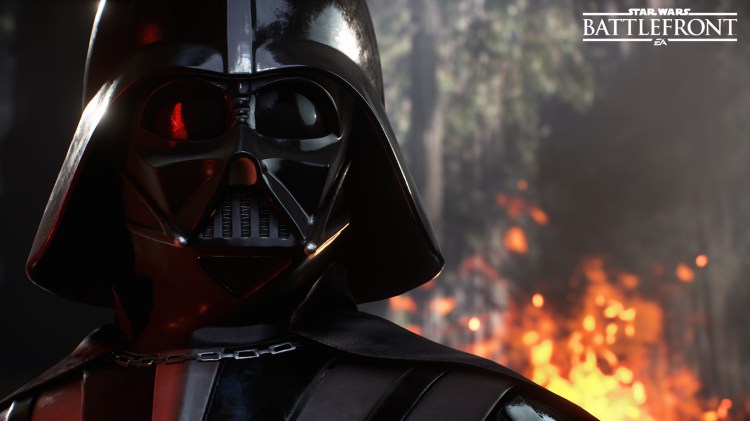The video game industry received a shock to the system this week as Electronic Arts rebooted its story-based Star Wars game and shut down Visceral Games, a studio that made some beefy blockbusters like Dead Space and Battlefield Hardline.
EA said that it was moving Star Wars project from Visceral to another studio in Canada, and it would do what it could to place the 70 employees of Visceral in other jobs. EA executive vice president Patrick Söderlund said that the game industry is evolving faster and more dramatically than ever before, and those changes had an impact on the Star Wars game that Visceral was making, led by Uncharted creator Amy Hennig.
“It was a very sad day,” said one of the leaders of the game business, in a private conversation with me.
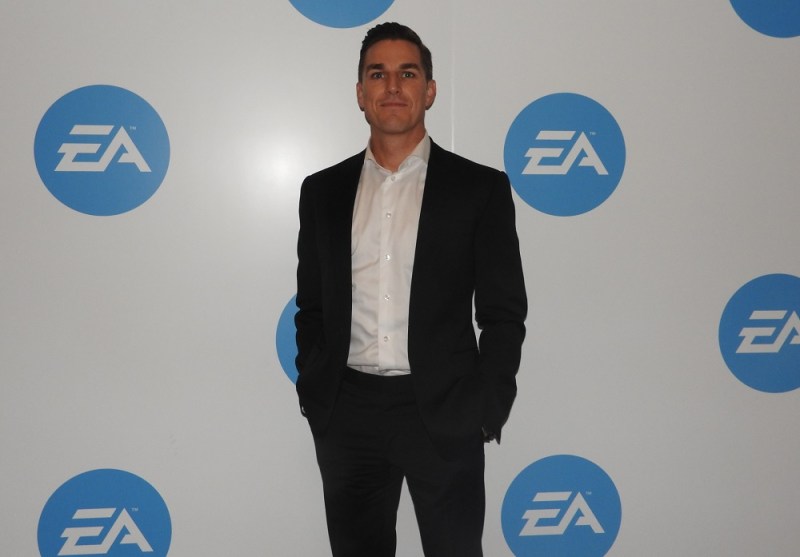
Above: Andrew Wilson, CEO of Electronic Arts.
It was a sad day for Visceral; it was a sad day for the Bay Area, which lost another game studio. And it was a sad day for the game industry in some way. Only time will tell if it was the right decision and if it was the right decision for gamers. The whole story hasn’t come out, and it could have many dimensions. After all, there was no guarantee that Hennig’s team was making a brilliant game.
Rob Pardo, a former Blizzard game designer and chief creative officer and now CEO of Bonfire Studios, reminded me that tough decisions were part of Blizzard’s way of doing things. It made the tough decision of shutting down a project code-named Titan, and that team recovered and made Overwatch, which now has 35 million players (and remember, all of them bought this game; this isn’t a free-to-play product). That turned out to be a tough decision that was great for gamers.
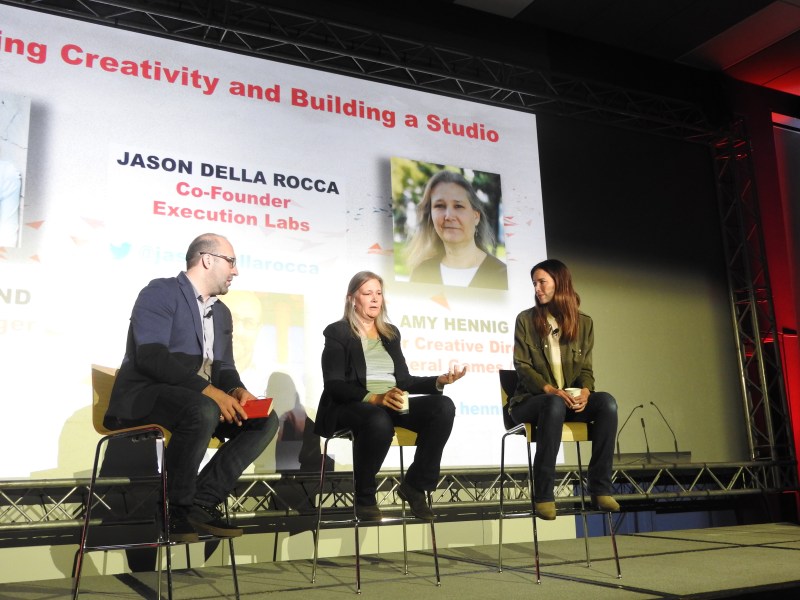
Above: Amy Hennig, center, talking about creativity in game narratives at MIGS 15 (with Jason Della Rocca and Jade Raymond).
Söderlund said the action-adventure game was shaping up to be a story-based and linear title. He said that gamers who played the prototype weren’t likely to come back to it over and over again, and that it wasn’t keeping up with a fundamental shift in the way gamers play.
This process is typical. You test a game idea with gamers. If they like it, you make it. If they don’t, you pivot. In this case, EA decided to pivot.
For EA, Visceral’s shutdown comes at an interesting moment. EA had already had some troubles at its BioWare division, which had the bad luck of launching a flawed Mass Effect: Andromeda game earlier this year. The creative director on the Dragon Age franchise just left the company, and the management team has changed on the Mass Effect side. We don’t expect any more Andromeda-based content.
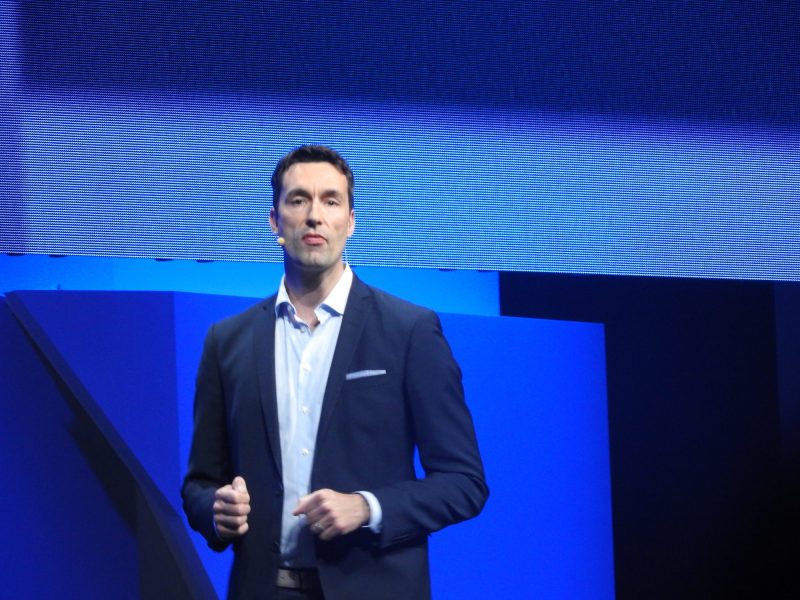
Above: Patrick Söderlund founded DICE and now he’s in charge of every game studio at EA.
Those are some hiccups in what has been a stellar performance in the leadership of Andrew Wilson, who became EA’s CEO in 2013. Under Wilson, EA’s biggest hits have become even bigger. The FIFA soccer series and Battlefield have generated billions in part because players keep coming back. They buy downloadable content and engage in microtransactions that create a steady revenue stream for a long time, and they keep players engaged on a year-round basis.
Those megahits have raised the bar, and I believe they have made the opportunity cost of developing games starkly clear. If you have a seasoned team with seasoned leaders, would you put them to work on a linear game with a single-player campaign? Or would it more sense to create a game that continuously monetizes over time and just gets bigger and bigger?
The answer is obvious, and Söderlund hinted at this in his reasons for shutting down Visceral and pivoting the game design. He said EA wants to deliver an experience that players will come back to again and again, and in doing so give players a Star Wars adventure of greater depth and breadth. Hennig was probably designing something that was more like Uncharted’s single-player games.
EA hasn’t said if Hennig will stick around, and that it was talking to her about her next move in the wake of her project’s cancellation. It would be a shame if EA lost such a talented storyteller.
Söderlund didn’t say exactly what the new pivoted game would become. It surely doesn’t mean a massively multiplayer online game like Star Wars: The Old Republic. That’s the old way. Rather, it means something more like an open world game or one that has continuous online experiences that keep players coming back every day. (A joke: Let’s hope it’s not a Star Wars social casino game.) I think it is clear that EA saw an opportunity cost. It had a chance to make a new Star Wars game (one of many such games), and it chose to focus on the opportunity to do one that would make more money.
I don’t have complete information. But I think that EA is getting part of the equation wrong, and this is why it has sent a scare through the industry. Does it mean single-player console games with great stories are dead? Does it mean that microtransactions are in our future? Does it mean that we’re not going to get many brand new stories — even ones set in a Star Wars universe — in the future?
Those questions should make some game developers shiver. EA has to be willing to take risks and bet on original content, even while it tends to its cash crops. Based on its slate lately, EA doesn’t seem to be taking enough risks. Back in 2008, EA made 60 games. In 2016, it made eight. But it is financially stronger than ever before.
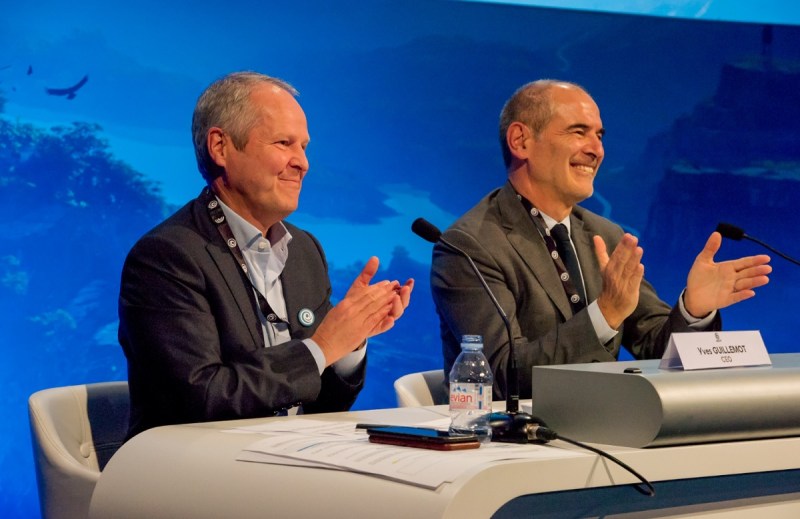
Above: Yves Guillemot (left) and CFO Alain Martinez at Ubisoft’s annual meeting in 2017.
On the other hand, EA has added a single-player campaign to Star Wars: Battlefront II. And EA has shown off original games, including Anthem from BioWare and A Way Out from Hazelight. And EA knows that it has to invest in the future and new intellectual properties if it is to survive and thrive in the future.
But EA clearly has less tolerance for experimentation than some of its rivals. Ubisoft’s Yves Guillemot believes that his company’s 12,000 employees have to experiment and create original IP, and they do so on a regular basis, in addition to making serial games like Assassin’s Creed or Just Dance.
Interestingly, investors value EA at $35 billion, while Ubisoft is only valued at $7 billion. (It’s no wonder that Vivendi is considering to take over Ubisoft). While Ubisoft might have a more admirable view of games and creativity, EA has the strategy that investors believe will ultimately win and make more money. Sometimes I worry about investors. Sometimes they are proven wrong.
Gamers might be really worried about whether they will get fewer single-player games in the future. I know that Wilson and Söderlund at EA understand these kinds of trade-offs and decisions. They just have to get the knobs and dials right as they finely tune exactly where EA should be headed.
So far, I think we can only conclude that the Visceral news was sad. Making games is hard. Gamers are demanding. Big companies have to examine their opportunity costs, but not follow them blindly.
And the game industry is brutal.
